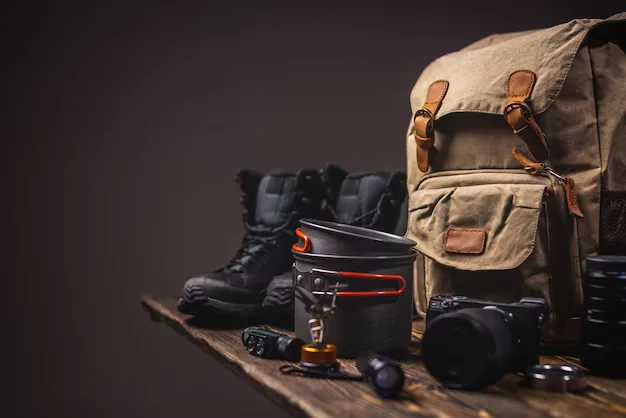Combat, emergency response, and survival situations all call for the use of specialized equipment known as tactical gear. This gear includes clothes, weaponry, and accessories that are designed to give users the required protection and functionality to accomplish their responsibilities efficiently and safely.
Tactical gear is essential because it increases the effectiveness and security with which its users fulfill their duties. Police officers, soldiers, and other military personnel need specialized equipment for two reasons: protection from hostile dangers, and access to the instruments required to perform their jobs effectively. Hikers and other outdoor enthusiasts may also find themselves in need of tactical gear in the event of an emergency.
Since the time when ancient soldiers donned armor and carried weapons into battle, tactical gear has advanced significantly. To adapt to the evolving nature of combat and other fields, this equipment has evolved over time. Soldiers started using gas masks during World War II to protect themselves from gas and other chemical weapons. Body armor, night vision goggles, and GPS tracking systems are just a few examples of the cutting-edge technologies that are now standard issue in tactical gear.
What is Tactical Gear?
Tactical gear meaning, in a broad sense, is anything that is purpose-built for use under extreme conditions. This equipment is made to help its wearers stay safe while still doing their jobs properly and efficiently. Typical traits of tactical equipment include toughness, usability, and flexibility in shifting conditions. Tactical equipment must be able to survive extreme conditions and regular use; hence durability is a must.
The term “functionality” used to describe tactical equipment relates to how well it helps its users complete their tasks. Because conditions can change suddenly, tactical equipment must be able to adapt in order to take these changes into account. Materials frequently utilized in ultimate tactical gear include metals, polymers, and high-strength textiles like nylon and Kevlar for protection and structural support. Additionally, tactical gear includes specialized elements like quick-release mechanisms for speedy deployment and mole webbing for attaching equipment and accessories.
Types of Tactical Gear
Tactical Clothing
The purpose of tactical clothing is to offer users more protection and functionality under pressure. This clothing’s breath-ability, moisture-wicking properties, and reinforced stitching keep you comfortable and cool while you exert yourself.
Some illustrations of tactical attire: The tactical gear list includes clothing items like boots, tactical vests, and battle uniforms. Combat uniforms offer camouflage and protection from the elements, and tactical vests provide an additional layer of protection and a place to store equipment. Tactical boots stand out for their support and stability on any surface.
Tactical Gear
What constitutes tactical equipment is as follows: A wide range of gear is referred to as tactical gear and is intended for use in warfare and other high-stress circumstances.
Tactical gear, such as weapons, ammo, protective clothes, and headgear are all examples of ultimate tactical gear. While helmets offer additional protection for the head and face, body armor is made to shield wearers from ballistic threats and other harm. Backpacks are designed to let users carry and organize their gear, unlike weapons like rifles and pistols, which are made for both defense and offense.
Tactical Accessories
Tactical accessories are supplemental components that complement and improve upon existing law enforcement tactical equipment.
The following are some examples of tactical accessories: Tactical accessories can include things like holsters, radios, and earpieces, as well as things like scopes and optics for firearms and flashlights. The purpose of these add-ons is to improve the usability and awareness of the main product.
Shooting Gear
An explanation of shooting equipment Shooting gear includes items designed to promote accuracy and safety when shooting.
Examples of shooting gear: shooting accessories could include shooting targets, range bags, ear protection, and shooting glasses. Shooting glasses and ear protection are designed to protect the shooter’s eyes and ears from potential damage, while range bags provide users with storage and organizing for shooting gear. The goal of a shooting target is to allow the user to perfect their aim and shooting skills.
Survival Gear
An explanation of survival equipment You’ll need survival equipment to keep yourself safe in the event of a disaster or if you end up in the woods.
Examples of survival gear: first aid kits, tents, sleeping bags, and water filtration devices are all examples of things that could be considered survival equipment. While tents and sleeping bags offer users shelter and protection from the elements, first aid kits are made to provide users with medical supplies and equipment to treat injuries. In the event of an emergency, individuals can purify water with the use of water filtration devices.
Training Gear
Training equipment is defined as any piece of machinery or item used to aid in the training or development of a person’s abilities.
Instances of Training Equipment: Practice weapons, safety gear, and simulation devices are all examples of useful training equipment. Protective gear offers users additional protection while training. Training weapons are made to allow users to hone their skills and techniques without the risk of injury. Users can experience a realistic training environment thanks to simulation technologies like simulators and virtual reality tools.

What is Tactical Gear Used for? Who uses tactical gear?
Military personnel:
The success and security of military operations depend on tactical equipment. This equipment consists of body armor, helmets, weapons, and other specialized gear made to improve their ability to function in combat situations.
Law enforcement officers:
To protect their own and the public’s safety while on the job, police officers outfit themselves with a number of different types of tactical gear.
Tactical gear for police officers consists of body armor, tactical vests, and weapons made for self-defense and suspect capture.
Hunters:
To enhance their hunting experience and success rate, hunters use tactical equipment. Clothing with camouflage patterns, hunting blinds, and other specialized equipment are all examples of what this category of hunting equipment entails.
Hikers:
Hikers employ tactical gear to protect themselves and enhance their experience while trekking. Backpacks, hiking boots, and other specific equipment that helps users store stuff, stay organized, and stay safe from the elements are examples of this type of gear.
Outdoor enthusiasts:
Outdoor fans deploy tactical gear to make their travels more pleasurable and safer. This gear may include survival gear, camping equipment, and other specialized equipment meant to assist users with shelter, food, and water in emergency situations.
How to Choose Tactical Gear
When purchasing tactical gear, there are many factors to consider, including:
Functionality:
Tactical equipment should be functional, meaning that it aids its users in a specific way. Users should carefully assess the gear’s intended application and verify that it is well-suited for that purpose.
Durability:
Tactical equipment needs to be able to survive wear and tear because it frequently encounters harsh surroundings and vigorous physical activity. If you want equipment that will last and perform well, look for products made from premium materials and built to standards set by the industry.
Comfort:
Since tactical equipment may be worn for lengthy missions or in high-stress circumstances, it should be comfortable to wear for long periods of time. Look for gear that is designed to provide a comfortable fit and is adjustable to suit your body type and preferences.
Weight:
Tactical gear can be cumbersome, especially when loaded with equipment and accessories. Users should examine the weight of the gear they are choosing and ensure they can comfortably carry it over long distances or longer periods of time.
Cost:
Although tactical equipment can be rather expensive, buyers shouldn’t compromise on quality to save money. Instead, look for equipment that is long-lasting and offers the best value for money.
Compatibility:
Tactical gear is generally built to function together, so users should consider the compatibility of their gear while making purchases. An integrated hydration system and backpack, for instance, would be excellent.
Users can optimize their efficacy and safety in tactical situations by taking these factors into account when choosing the tactical gear that is best for their needs.
Best practices for using and maintaining tactical gear:
There are a number of best practices to adhere to when using and maintaining tactical equipment, including:
Frequently examining and cleaning equipment
Regularly cleaning and inspecting tactical equipment is essential. Users should be careful to inspect equipment before and after each use and follow the manufacturer’s instructions for cleaning and maintenance.
Keeping equipment organized
When storing equipment properly, one must keep it away from harsh conditions like freezing temperatures and direct sunlight. Users should avoid placing their equipment near sources of moisture because doing so could encourage the formation of mold and mildew.
Following manufacturer recommendations:
Users should follow the manufacturer’s instructions for using, maintaining, and repairing their tactical equipment in order to ensure the best performance and safety. Additionally, to instructions for modifying or replacing components, there may be suggestions for particular cleaning agents or techniques.
Upgrading gear as needed:
As users’ needs evolve or new technology becomes available, tactical equipment may need to be upgraded over time. Users should periodically evaluate their gear and consider upgrading or replacing components as needed in order to ensure that they are always using the best equipment possible.
Regarding STL Tactical Deals, a tactical USA website, they are a company that specializes in offering top-notch tactical equipment to members of the armed forces, law enforcement officials, hunters, hikers, and outdoor enthusiasts. They sell a variety of tactical gear items, including clothing, accessories, weapons, survival gear, and even training gear.
Customers may be confident that the high-quality products offered by STL Tactical Deals will last for many years and fulfil their needs. By following best practices for using and maintaining tactical gear, and choosing high-quality products from companies like STL Tactical Deals, users can ensure their safety and effectiveness in tactical situations.

Conclusion
A group of tools and supplies known as tactical equipment was created to enhance soldiers’ abilities in a variety of combat situations. Without the right tools, you can’t expect to perform well or stay safe in a tactical situation. Users must consider what they want and choose tools that can provide it for them.
When buying tactical equipment, users should place the highest priority on quality, durability, and functionality. They should also utilize and maintain the equipment properly to extend its useful life and enhance its performance. Everyone who spends time in the field, including soldiers, police officers, hunters, and hikers, needs tactical gear.
FAQ’s
Why do people like tactical gear?
The utility and durability of tactical gear appeal to people.
Can civilians wear tactical gear?
Yes, civilians can wear tactical gear.
Does tactical mean bulletproof?
No, tactical is not synonymous with bulletproof.
Can you swim in tactical gear?
Tactical gear is too heavy to swim in.
Why do police wear tactical vests?
Tactical vests protect police from gunshot wounds.

